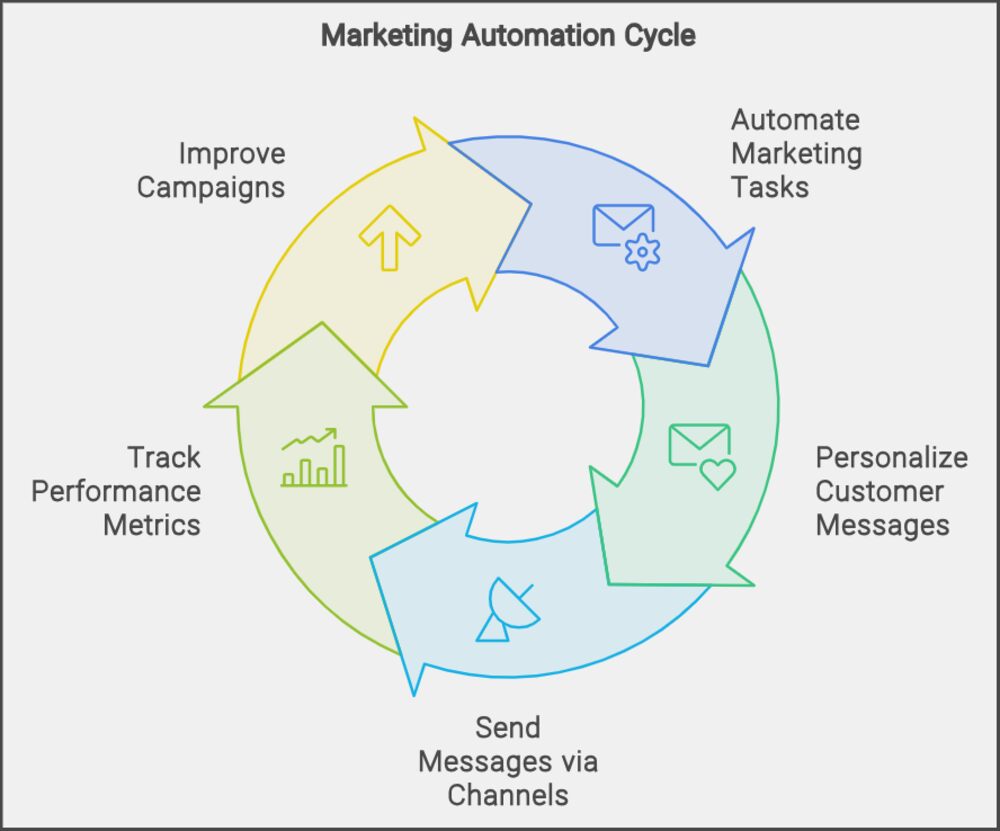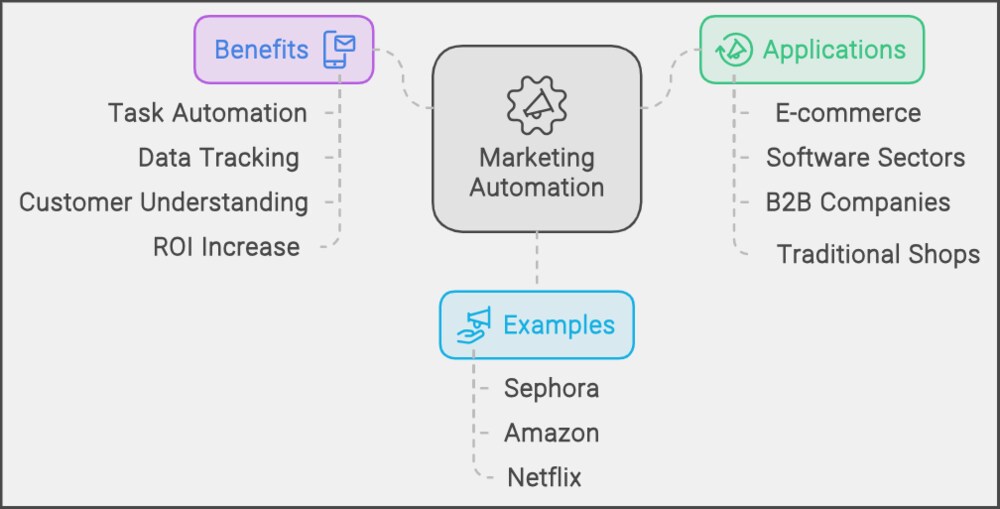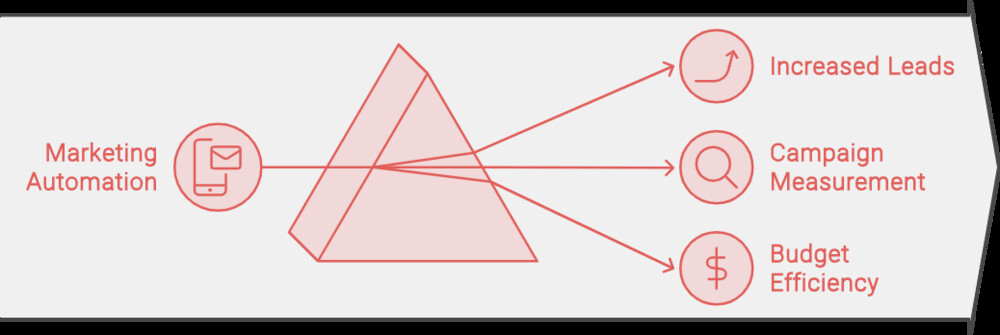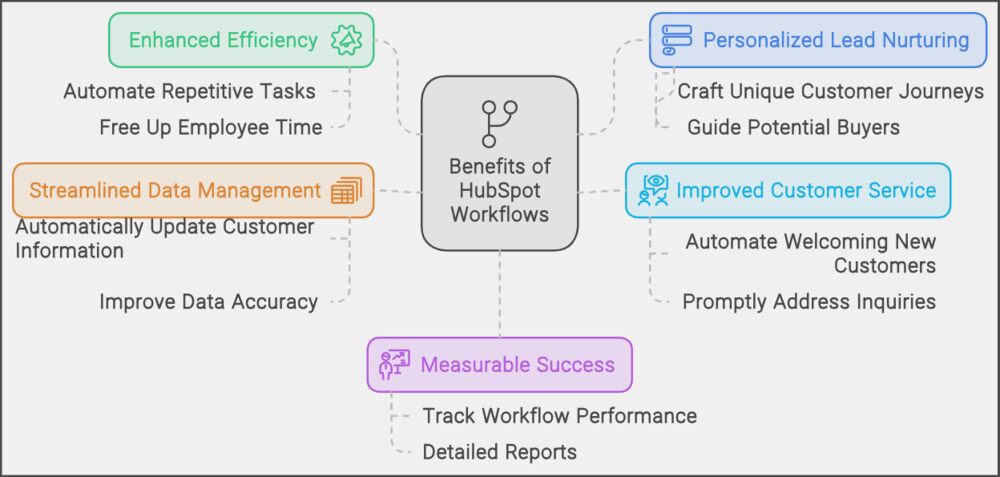Niche markets need a special touch to connect with their audience. With marketing automation, businesses can simplify their work. They can also make their marketing more personal for their customers.
In real estate, marketing automation is a game changer. It helps in finding leads and keeping in touch with potential buyers. This means real estate agents can be more organized and provide what their clients need.
E-commerce also sees big benefits from marketing automation. Features like reminding customers about cart items, suggesting relevant products, and checking emails all help. They improve the shopping experience, increase sales, and foster customer loyalty.
Understanding Niche Markets
Before we talk about marketing automation, let’s define niche markets clearly. We will look at what makes them unique, their significance, and the hurdles marketers may encounter. All focused on these special segments. Understanding niche markets is essential for any marketer to maximize their reach and impact.
A niche market refers to a specific subset of a larger market. It caters to a particular group of consumers with unique needs, interests, and characteristics. These markets are often overlooked by larger businesses that prefer to focus on more general target audiences.
Marketing automation plays a crucial role in effectively reaching and engaging niche markets. It allows marketers to streamline and automate their campaigns, ensuring personalized and targeted messaging to a specific audience segment. By leveraging automation tools, marketers can save time and resources while delivering relevant content tailored to the unique needs of their niche market consumers.
Marketing automation in niche markets can present some challenges. Often, niche markets have smaller customer bases, making it essential to have a deep understanding of their preferences, pain points, and behavior. Marketers must conduct thorough market research and utilize data analysis to make informed decisions and tailor their strategies accordingly.
In conclusion, leveraging marketing automation in niche markets can be a game-changer for businesses. By understanding and catering to the unique needs of these special segments, marketers can boost engagement, increase conversions, and gain a competitive edge in the market. Implementing automated tools and strategies ensures efficiency and effectiveness in reaching and engaging niche market consumers, unlocking growth and success opportunities.
The Benefits of Marketing Automation in Niche Markets
Marketing automation is a big help to businesses in small markets. It lets them make their marketing work smoother, make customers happier, and grow. Here are some top ways it helps in niche markets:
1. Personalized Customer Experiences
With marketing automation, businesses can send messages and content that feel personal. They sort customer data and make special plans. This makes customers feel more connected and interested.
2. Improved Lead Nurturing
In smaller markets, it’s key to gently turn leads into customers. Automation helps by sending out the right info at the right time. This helps move leads along the sales path better.
3. Enhanced Efficiency
Automation can make marketing jobs in niche markets a lot faster. No more sending every email by hand or checking with leads non-stop. This lets marketers do more important work. It also means fewer mistakes in campaigns.
4. Data-Driven Decision Making
With automation, businesses get a lot of useful data. This data shows what customers like and how campaigns are doing. By looking at this, businesses can make smarter decisions. They can change what’s not working to make their marketing better for their market.
5. Scalability and Growth Potential
In a niche market, growing smart is important. Marketing automation is good for growing businesses. It can handle more data and bigger campaigns as a business gets bigger. This means it helps a business grow without hitting marketing roadblocks.
| Benefits of Marketing Automation in Niche Markets |
| Personalized Customer Experiences |
| Improved Lead Nurturing |
| Enhanced Efficiency |
| Data-Driven Decision Making |
| Scalability and Growth Potential |
Tailoring Marketing Automation for Real Estate
For real estate, effective marketing automation is a must. It helps professionals streamline marketing. This way, they engage better with their audience. Here, we look at how to use automation specifically for real estate. We will discuss important tactics and benefits.
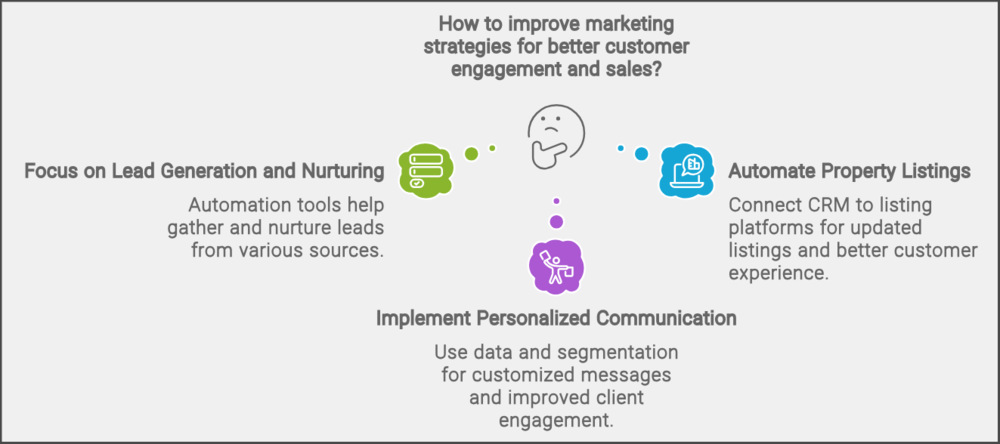
Lead Generation and Nurturing
To start, focus on generating and nurturing leads. Automation tools help agents gather leads from many sources. Then, these leads are engaged and nurtured automatically. This step ensures a personal and quick follow-up with potential clients.
Automated Property Listings
Automating property listings is vital in real estate marketing. Agents can easily share updated listings when CRM is connected to listing platforms. This makes sure buyers see the latest offerings. It leads to better customer experience and more sales.
Personalized Communication
Personalized marketing in real estate is important. Automation helps achieve this. By using data and segmentation, agents can send customized messages. This might include recommended properties or personal email campaigns. Automation lets agents deliver useful and timely information to clients.
Leveraging Marketing Automation in E-commerce
The e-commerce industry is growing fast. To stand out and succeed, businesses need to use marketing automation. This tool can streamline operations, boost customer engagement, and drive growth.
Abandoned Cart Recovery
Many e-commerce businesses face the challenge of abandoned carts. Customers add items to their carts but leave without buying. Marketing automation helps here. It lets businesses send automated emails. These emails can include reminders, discounts, or product recommendations. Businesses see more sales from these efforts.

Personalized Product Recommendations
Marketing automation also allows for personalized recommendations. Businesses can study customer behavior, purchases, and preferences and suggest products that fit the customer well. These tailored suggestions improve customer shopping experiences, loyalty, and sales.
Drip Campaigns for Customer Engagement
Drip campaigns send targeted messages to customers over time. Businesses use these to nurture leads and build loyalty. They provide valuable content and offers by segmenting data and creating specific email sequences. This approach drives customer engagement and encourages more purchases.
Efficient Customer Support
Excellent customer support is essential for e-commerce. Marketing automation can handle parts of it, like sending updates. It also includes chatbots for instant help. These tools improve the customer experience and save the business time.
Best Practices for Implementing Marketing Automation
Marketing automation can work wonders in a focused market. To make it work well, start with solid planning and clear goals. We’ll look into what’s needed to get your automation up and running smoothly for your business.
Selecting the Right Automation Platform
Choosing the best automation platform is key. Look closely at how well it can grow with your needs, user-friendliness, and ability to work with other tools. Make sure it fits your business aims. Do your homework, check what users say, and try out some platforms before settling on one.
Defining Goals and Metrics
First things first, set your goals and how you’ll know if you’re meeting them. Whether it’s upping your sales, keeping more customers, or boosting your bottom line, starting with clear targets is a must. This roadmap will shape your plan and keep you on track.
Segmenting Audiences
Knowing who you’re talking to is essential for personal and targeted campaigns. Study your customer info to find groups that would respond well to specific messages and deals. This way, your communication hits home, boosting engagement and loyalty.
Crafting Effective Automated Content
Your automated content is your voice to your audience. Make it count with email series, web pages, and social media that guide people across their journey with you. Compelling text, striking visuals, and clear calls to action are your best bets here.
Stick to these guidelines for a strong start with marketing automation in your niche. Keep an eye on your strategies, tweak as you go, and always aim to do better. With the right approach, automation can be a game changer for your marketing.
Overcoming Challenges in Marketing Automation for Niche Markets
Marketing automation has great perks, yet niche markets bring their hurdles. Marketers must spot and tackle these challenges. This way, they can make good use of automation tools in niche areas. One major challenge with marketing automation in niche markets is the lack of data. Niche markets often have a smaller customer base, which means limited data points to work with. This makes it challenging to create personalized and targeted campaigns. Marketers need to find creative ways to gather more data or leverage the limited data available to ensure their automation efforts are effective.
Another challenge is understanding the unique needs and preferences of niche market customers. Niche markets often have specific interests and requirements that differ from the broader market. Marketers must invest time in researching and understanding their target audience to create customized content and automation workflows that resonate with them.
Furthermore, niche markets may require more specialized tools and integrations compared to broader markets. Marketers often need to explore and adopt niche-specific automation solutions to meet the unique requirements of their target market. This could include integrating with industry-specific software or platforms to ensure seamless automation processes.
Understanding the Unique Dynamics of Niche Markets
Niche markets focus closely on specific audiences. To use automation well here, you need to know the market’s ins and outs. Understand what drives your customers, what they like, and what they struggle with. This is the first step to creating targeted automation strategies.
Adapting Automation Workflows for Niche Markets
Fitting general automation plans to niche needs is tricky. You must tweak your strategies, messages, and content to match the niche. This makes your marketing more appealing and effective for your specific audience.
Data Acquisition and Integration
Niche markets often lack easily available data. Getting and using data well is key to success. Marketers should use many channels to collect data. Then, they must smoothly integrate this data into their automation systems. This allows for more personalized and smarter marketing.
Ensuring Personalization at Scale
Personalization is crucial in niches where customers want special treatment. But doing this for many customers can be hard. Marketers need to use automation tools wisely. By using data insights, they can tailor customer experiences all along the journey.
Securing Stakeholder Buy-In
Getting support for marketing automation in niche areas is a big step. You need to convince key people, like your bosses, IT teams, and sales staff. Clearly show the benefits of automation. Also, make an effort to address any worries they might have.
Measuring and Optimizing Automation Performance
Checking how well your efforts are doing and improving them is a must. This involves watching key stats, analyzing data, and making your strategies better over time. It’s all about fine-tuning your automation game to keep winning.
| Challenge | Strategy |
| Understanding the Unique Dynamics of Niche Markets | Conduct thorough market research and gather customer insights. Then, tailor your automation strategies to meet the specific needs and solve the pain points of your target niche. |
| Adapting Automation Workflows for Niche Markets | Adjust your automation systems, content, and messages to the wants and demands of the specific niche market. |
| Data Acquisition and Integration | Use many channels to collect data. Then, make sure it fits well into your automation systems for better personalization and decision-making. |
| Ensuring Personalization at Scale | Use automation tools and insights from data to provide custom communications and experiences all through the customer’s journey. |
| Securing Stakeholder Buy-In | Show the value of marketing automation. Address concerns and offer insights on the benefits. This will help get support from stakeholders. |
| Measuring and Optimizing Automation Performance | Always keep an eye on the data. Analyze often and make changes to your strategies to boost the power of your marketing automation. |
Case Studies: Successful Marketing Automation in Niche Markets
This section looks at real case studies of businesses mastering marketing automation in niche markets. They show how using automation improved operations and reached more people. These success stories offer great lessons for any marketing automation project in a niche market.
Case Study 1: Ace Realty
Ace Realty, a top real estate firm for luxury homes, used marketing automation to boost how they connect with clients. They set up email campaigns that targeted specific buyers and sellers. This effort led to a remarkable 35% increase in converting these leads to sales in just six months.
Case Study 2: Fashion Emporium
Fashion Emporium, a web store focused on sustainable fashion, used automation to get closer to its customers. They analyzed shoppers’ habits to send very personalized emails. This approach increased clicks by 40% and sales by 20%. They also used automation to remind customers about forgotten items in their online carts, which cut down on abandoned orders by 15%.
Case Study 3: Healthy Greens
Healthy Greens, a store for health foods, turned to automation to build customer loyalty. They sent out personalized emails with special offers, resulting in a 30% jump in keeping customers. This effort also increased the amount customers spend by 25%. By really getting to know their health-focused customers, they built stronger, lasting connections.
| Case Study | Business | Goal | Results |
| Case Study 1 | Ace Realty | Improve lead conversions for luxury properties | 35% increase in lead conversions within six months |
| Case Study 2 | Fashion Emporium | Increase click-through and conversion rates for sustainable fashion | 40% increase in click-through rates, 20% boost in conversion rates |
| Case Study 3 | Healthy Greens | Enhance customer loyalty and increase repeat purchases | 30% increase in customer retention, 25% growth in customer lifetime value |
Conclusion
This article showed how custom marketing solutions can boost real estate and e-commerce sales. By tailoring strategies, businesses can grow fast and stand out.
Using marketing automation brings many pluses to these areas. It makes work smoother, enhances the shopper’s journey, and raises profits. We also shared how to put this tech to good use, like with personalized content and guiding customers through their buy path.
So, to win in these special markets, it’s vital to tweak approaches for their needs. This helps businesses bond closer with the people they want to reach. It boosts sales, meets marketing goals, and paves the way for continuing success. So, using automation smartly isn’t just wise; it’s crucial for growing and shining in the crowd.



